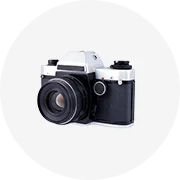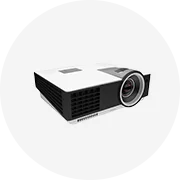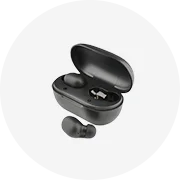Types of Mini Jet Turbine Engine
A mini jet turbine engine is a compact gas turbine propulsion system designed for use in model aircraft, drones, and other remote-controlled vehicles. These engines replicate the functionality of full-scale jet engines but are scaled down to meet size, weight, and power requirements for smaller applications. The various types of mini-jet turbine engines each offer unique performance characteristics, efficiency levels, and suitability for different use cases.
Turbojet Engines
The oldest and most basic type of jet engine, turbojets compress incoming air, mix it with fuel, ignite it, and expel the exhaust to generate thrust. While they excel at high-speed operation, their fuel efficiency is relatively low.
Advantages
- High-speed capability
- Suitable for supersonic models
- Simple design concept
Limitations
- Poor fuel economy
- Noisy operation
- Less efficient at subsonic speeds
Best for: High-speed model jets, competition flying, aerobatic RC planes
Turbofan Engines
An advanced evolution of the turbojet, turbofans include a large front-mounted fan that bypasses air around the engine core, increasing thrust and reducing noise while improving fuel efficiency.
Advantages
- Better fuel efficiency
- Quieter than turbojets
- Improved thrust at lower speeds
Limitations
- Increased weight and complexity
- Higher cost
- Larger physical footprint
Best for: Scale commercial aircraft models, quiet performance-oriented drones
Turboprop Engines
These engines convert energy from combustion into rotational motion to drive an external propeller. They provide excellent thrust at low speeds and altitudes, making them ideal for specific niche applications.
Advantages
- Excellent low-speed performance
- Good fuel efficiency at low altitudes
- Effective for short takeoff and landing (STOL)
Limitations
- Not suitable for high-speed flight
- More complex drivetrain required
- Propeller maintenance considerations
Best for: Regional aircraft scale models, STOL-capable drones, bush planes
Ramjet Engines
Unlike traditional turbines, ramjets have no moving parts and rely on forward speed to compress incoming air. They only operate efficiently at supersonic speeds, making them highly specialized.
Advantages
- Extremely simple mechanical design
- High thrust-to-weight ratio at supersonic speeds
- Minimal maintenance due to lack of rotating parts
Limitations
- Cannot start from rest; requires launch mechanism
- Inefficient at subsonic speeds
- Niche application availability
Best for: Supersonic missile replicas, experimental high-speed projects
Scramjet Engines
Short for "supersonic combustion ramjet," scramjets allow supersonic airflow through the combustion chamber, enabling hypersonic flight capabilities beyond Mach 5. They represent cutting-edge technology in aerospace engineering.
Advantages
- Capable of hypersonic speeds (Mach 5+)
- Highly efficient at extreme velocities
- Potential for future spaceplane applications
Limitations
- Requires extremely high startup speed
- Complex ignition and control systems
- Still largely experimental in miniature form
Best for: Hypersonic research models, academic studies, aerospace development platforms
Pulsejet Engines
Pulsejets operate using intermittent combustion cycles, creating pulsating bursts of thrust. While mechanically simple, they can be challenging to tune and maintain consistent performance.
Advantages
- Very simple construction
- Low manufacturing cost
- Unique sound and visual appeal
Limitations
- Vibrational issues
- Noisy operation
- Inconsistent thrust delivery
Best for: Hobbyist builds, vintage-style drone propulsion, educational demonstrations
Microturbine Engines
Designed specifically for small-scale applications, microturbines balance efficiency, reliability, and compactness. They are often used in UAVs and high-performance RC aircraft where weight savings and endurance matter.
Advantages
- Compact and lightweight
- Fuel-efficient designs available
- Long operational life between overhauls
Limitations
- Relatively expensive compared to piston engines
- Requires precision manufacturing
- Fuel system complexity
Best for: Drones, long-range RC aircraft, portable generator units
| Type | Efficiency | Speed Range | Complexity | Primary Use Case |
|---|---|---|---|---|
| Turbojet | Moderate | Subsonic to Supersonic | Moderate | Aerobatic RC jets, competition models |
| Turbofan | High | Subsonic | High | Commercial aircraft models, quiet drones |
| Turboprop | High | Low Speed | Moderate | Regional aircraft replicas, STOL drones |
| Ramjet | Very High (at speed) | Supersonic | Low | Hypersonic research, missiles |
| Scramjet | Extreme (hypersonic) | Hypersonic | Very High | Experimental aerospace, spaceplanes |
| Pulsejet | Low | Subsonic | Low | Historical recreations, hobbyist builds |
| Microturbine | High | Variable | Moderate | Drones, UAVs, portable generators |
Expert Tip: When selecting a mini jet turbine engine, consider not just raw performance but also your intended usage scenario, fuel availability, maintenance capabilities, and regulatory requirements for operating such engines in your region.
Specifications and Maintenance of Mini Jet Turbine Engines
Key Specifications for Mini Jet Turbine Engines
Mini jet turbine engines are highly engineered systems designed to provide thrust in a variety of applications ranging from unmanned aerial vehicles (UAVs) to small experimental aircraft. Understanding their specifications is crucial for selecting the right engine and ensuring optimal performance.
Engine Length
The overall length of a mini jet turbine engine typically ranges from about 1 meter to 2.5 meters or more. This dimension directly affects airflow dynamics and thrust generation. Longer engines allow for more stages of compression and expansion, which can increase efficiency and power output.
However, increased length also adds weight and may require structural adaptations to the airframe. Engineers must balance aerodynamic advantages with practical design constraints when choosing an engine based on its length.
Engine Diameter
Diameter is a critical measurement that influences both the engine’s physical integration into the aircraft and its performance characteristics. Most mini jet engines have diameters between 0.2 meters and 0.75 meters.
A larger diameter allows for greater airflow and fuel intake, which enhances combustion efficiency and thrust production. However, this must be weighed against aerodynamic drag and installation feasibility within the aircraft's fuselage or nacelle.
Turbine Inlet Temperature
This specification refers to the temperature of gases entering the turbine section of the engine, which can exceed 1,100 degrees Celsius in high-performance mini jet engines. Higher inlet temperatures generally equate to increased thermal efficiency and power output.
Advanced materials such as nickel-based superalloys and ceramic matrix composites (CMCs) are often used to withstand these extreme conditions while maintaining structural integrity over time.
Engine Weight
Mini jet engines typically weigh between 50 kg and 150 kg. The weight-to-thrust ratio is a key consideration in aerospace applications where every kilogram impacts overall performance and payload capacity.
While heavier engines can produce more thrust due to larger internal components and higher fuel flow, lightweight designs using modern alloys and composite materials offer better maneuverability and fuel economy, especially in smaller aircraft and drones.
Maximum Thrust
Thrust is the force that propels the aircraft forward and varies widely among mini jet engines, ranging from 500 Newtons to 5,000 Newtons or more. Factors influencing thrust include turbine size, fan blade geometry, and rotational speed (RPM).
Higher thrust outputs are typically achieved through optimized compressor and turbine blade profiles, improved fuel delivery systems, and advanced combustion chamber designs that maximize energy extraction from the fuel-air mixture.
Maximum RPM
Mini jet engines operate at extremely high rotational speeds, typically between 10,000 and 50,000 revolutions per minute (RPM). These high speeds are necessary to maintain efficient airflow through the compressor and turbine sections.
Components must be precisely balanced and constructed from high-strength materials to endure centrifugal forces and thermal stress without failure. Bearings, seals, and blade retention systems are particularly critical in high-RPM operation.
| Specification | Typical Range | Performance Impact |
|---|---|---|
| Engine Length | 1 - 2.5+ meters | Affects airflow dynamics and thrust potential; longer engines enable more complex stage configurations |
| Engine Diameter | 0.2 - 0.75 meters | Larger diameter increases airflow and fuel capacity, enhancing combustion efficiency |
| Turbine Inlet Temp | Up to 1100°C | Higher temps boost thermal efficiency but require heat-resistant materials |
| Engine Weight | 50 - 150 kg | Balancing act between power output and aircraft agility/payload |
| Max Thrust | 500N - 5000N+ | Directly impacts acceleration, climb rate, and maximum speed |
| Max RPM | 10,000 - 50,000 | Higher RPM improves compression and thrust but demands superior component durability |
Essential Maintenance Practices for Mini Jet Engines
Maintaining a mini jet turbine engine is vital for preserving performance, safety, and longevity. Regular maintenance ensures reliable operation and helps prevent catastrophic failures during flight operations.
Important: Never attempt to modify or repair engine components without proper authorization and expertise. Improper maintenance can severely compromise engine reliability, performance, and safety. Always consult the official technical manual and seek professional assistance when necessary.
How to Choose Mini Jet Turbine Engine
Selecting the ideal mini jet turbine engine requires careful evaluation of multiple technical and practical factors. Whether you're building a scale model, conducting engineering research, or developing an educational demonstration unit, choosing the right engine ensures optimal performance, safety, and cost-effectiveness.
Intended Application and Use Case
The primary function of your mini jet turbine will dictate many other specifications. Different applications demand different performance characteristics, fuel types, and operational complexity.
- Educational use: Prioritize visibility of internal components and ease of operation for student demonstrations
- Model aircraft propulsion: Focus on thrust-to-weight ratio and compatibility with airframe design
- Engineering testing: Look for adjustable parameters and data output capabilities
- Hobbyist display: Consider visual appeal, noise levels, and maintenance requirements
Key consideration: Match engine capabilities precisely to project requirements rather than over-specifying
Thrust Requirements and Performance
Thrust is arguably the most critical specification when selecting a mini jet turbine. It determines what kind of airframe the engine can effectively power and how it will perform under various conditions.
- Small-scale RC models typically require 10-50 lbs of thrust
- Scale fighter jet replicas often need 100+ lbs of thrust
- Static displays may only require minimal thrust for visual effect
- Consider altitude compensation if operating at high elevations
Measurement tip: Calculate required thrust as approximately 25-35% of total aircraft weight for good performance
Size, Weight, and Integration
The physical dimensions and weight of the engine must align with your airframe's design constraints and structural capabilities. Proper integration affects not just installation but also flight characteristics.
- Check mounting point locations and spacing
- Verify clearance for rotating components
- Assess fuel system placement options
- Ensure proper center of gravity balance
Design consideration: Allow additional space for exhaust routing and cooling airflow
Operational Complexity and Skill Level
Mini jet turbines vary significantly in terms of operation difficulty. Choosing an engine that matches your experience level ensures safer operation and more enjoyable use.
- Entry-level engines feature automatic start systems and simplified controls
- Intermediate models offer manual control options for tuning performance
- Professional units provide full parameter adjustment for research purposes
- Consider availability of support documentation and community knowledge
Safety note: Always allow for adequate training before operating turbine-powered aircraft
Budget and Cost Considerations
While budget is always a factor, it's important to consider both initial purchase costs and long-term expenses associated with operation and maintenance.
- Entry-level engines start around $1,500 - $3,000
- Mid-range professional models range from $5,000 - $10,000
- High-performance research units can exceed $20,000
- Factor in ongoing costs for fuel, maintenance parts, and instrumentation
Value insight: Higher initial investment often pays off through better reliability and longer service life
Fuel Type and Availability
Mini jet engines operate on various fuel types, each with specific handling requirements and performance characteristics that should match your application needs.
- Kerosene-based fuels (like Jet A) are common in larger turbine engines
- Propane/nitromethane blends popular for smaller hobby units
- Diesel-compatible engines available for certain applications
- Electric starter systems simplify ignition process
Storage note: Always follow local regulations for storing and handling aviation fuels
Purchasing Advice: When evaluating engines, request detailed specifications including thrust curves across RPM ranges, fuel consumption rates at different power settings, and maintenance intervals. Contact existing users through forums or social media groups to learn about real-world performance and reliability experiences before making a final decision.
| Application Type | Recommended Thrust Range | Typical Fuel Type | User Experience Level |
|---|---|---|---|
| Beginner RC Model Aircraft | 10-25 lbs | Propane/Nitromethane blend | Basic |
| Intermediate Scale Models | 30-75 lbs | Kerosene or Diesel | Moderate |
| Advanced Aerobatic Models | 80-150 lbs | JET A or Synthetic Blend | Advanced |
| Research & Development | Customizable | Variety of Test Fuels | Expert |
DIY Replacement Guide for Mini Jet Turbine Engines
Replacing a mini jet turbine engine is a complex but rewarding task that requires technical knowledge, precision, and the right equipment. Whether you're maintaining a model aircraft or a small-scale jet-powered device, this comprehensive guide will walk you through the necessary steps to complete the replacement safely and effectively.
Safety Warning: Working with jet engines involves high temperatures, flammable fuels, and rotating machinery. Always wear protective gear, work in a controlled environment, and ensure all safety protocols are followed to avoid injury or damage.
Essential Tools and Materials
A successful turbine engine replacement begins with having the correct tools and materials at your disposal. These components not only make the job easier but also help ensure safety and precision during installation:
- Socket sets: Various metric and standard sizes to handle bolts and fasteners of different dimensions.
- Torque wrenches: Ensures proper tightening of critical components according to manufacturer specifications.
- Jet fuel (JP-8, JP-5, or equivalent): Use only approved fuel types suitable for your specific engine model.
- Lubricating oil: High-temperature synthetic oil designed for turbine applications.
- Safety glasses: Protects eyes from debris, hot particles, or chemical splashes.
- Protective gloves: Provides hand protection against sharp edges, heat, and hazardous fluids.
- Scaffolding or support structures: Offers stable access and workspace when working on larger models or mounted units.
- Engine hoist or lifting arm: Safely lifts and positions the heavy turbine unit without causing strain or damage.
Pro Tip: Keep a labeled container system for drained fluids and a clean workspace to avoid contamination and streamline the reassembly process.
Detailed Step-by-Step Replacement Procedure
- Review the Instruction Manual
Before beginning any physical work, thoroughly read the user manual provided by the engine manufacturer. This document contains vital information regarding specifications, torque values, and model-specific procedures.
- Gather All Required Tools and Parts
Ensure every tool and component listed in the manual is present and in good condition. Missing or damaged items can delay the process or compromise safety.
- Allow Engine to Cool Down
Never attempt removal on a hot engine. Allow it to cool completely to prevent burns and thermal stress on surrounding components.
- Wear Appropriate Safety Gear
Put on safety glasses, gloves, and other required PPE before starting disassembly. Safety should always be the top priority.
- Disconnect Power Sources and Drain Fluids
- Turn off the main power switch and disconnect the battery if applicable.
- Drain all remaining jet fuel and lubricating oil into appropriate containers.
- Label fluid lines and connections for easier reinstallation.
- Remove Old Engine
Following the manual’s guidance, carefully detach mounting brackets, electrical wiring, fuel lines, and exhaust systems. Use a hoist to lift the engine out while ensuring no strain is placed on surrounding structures.
- Inspect New Engine
Before installation, examine the new turbine engine for signs of damage or defects. Verify that all ports, mounts, and connectors match the old unit. Clean any protective coatings or shipping oils as needed.
- Install New Engine
Position the new engine using the hoist, aligning it with mounting points. Secure all bolts and fasteners to the specified torque values. Reconnect all systems following your labels and diagrams.
- Reconnect Systems
- Reattach all electrical harnesses securely.
- Connect fuel lines and double-check for leaks.
- Reinstall exhaust ducting and ensure proper airflow clearance.
- Perform System Checks
Before starting the engine, verify that all systems are properly connected and functioning. Check for loose wires, open valves, or unsecured components. Run a visual inspection of the entire installation area.
- Initial Engine Start and Testing
With all systems ready, reconnect the battery and start the engine. Monitor for unusual noises, vibrations, or smoke. Let the engine idle for several minutes to stabilize. Conduct a brief functional test under safe conditions before full operation.
| Phase | Critical Actions | Potential Risks | Recommended Tools |
|---|---|---|---|
| Preparation | Manual review, part verification | Mismatched parts, incomplete instructions | User manual, labeling kit |
| Disassembly | Fluid drainage, connection labeling | Spills, lost connections | Drain pans, zip ties, markers |
| Removal | Hoisting, mount bolt removal | Improper lifting, structural damage | Hoist, breaker bar, jack stands |
| Installation | Bolt torquing, alignment checks | Over-tightening, misalignment | Torque wrench, alignment laser |
| Testing | Leak check, idle run | Undetected faults, overheating | Pressure tester, infrared thermometer |
Expert Advice: After installation, keep a log of initial performance metrics such as RPM stability, fuel consumption, and temperature readings. This data helps diagnose potential issues early and ensures optimal engine longevity.
Understanding Mini Jet Turbine Engines
A1: The mini jet turbine engine serves a variety of high-performance and specialized applications, primarily in the field of small-scale propulsion systems. Its most notable use is in aviation, where it powers micro jets and small supersonic aircraft models capable of reaching impressive speeds. These engines are also widely used in advanced hobbyist projects such as:
- Model Rocketry: Providing reliable thrust for scale-model rockets and experimental aerospace prototypes.
- Unmanned Aerial Vehicles (UAVs): Equipping drones designed for research, surveillance, or demonstration purposes with compact, powerful propulsion.
- Radio-Controlled Aircraft: Used by experienced modelers to power large-scale RC jets that simulate real jet performance.
- Industrial Testing: Employed in laboratories and engineering environments to test fuel efficiency, aerodynamics, and control systems under jet-like conditions.
Due to their compact size and relatively high thrust output, mini jet turbines are ideal for applications where space is limited but significant propulsion is required.
A2: The operation of a mini jet turbine engine follows the same fundamental principles as full-sized jet engines, albeit on a smaller scale. It operates through the following key stages:
- Intake: Air enters the front of the engine through a carefully designed intake, which helps regulate airflow and reduce turbulence before compression begins.
- Compression: The air is compressed using a multi-stage axial or centrifugal compressor. This increases both the pressure and temperature of the incoming air significantly.
- Combustion: The compressed air moves into the combustion chamber, where it is mixed with atomized fuel (typically kerosene-based). The mixture is then ignited, creating a controlled explosion that generates high-pressure, high-temperature gas.
- Turbine: The hot gas flows over the turbine blades, causing them to spin. This rotation drives the compressor at the front of the engine via a shared shaft, sustaining the cycle.
- Exhaust: Finally, the remaining gas exits through the exhaust nozzle at high velocity, producing forward thrust according to Newton’s third law of motion ("for every action, there is an equal and opposite reaction").
This continuous process allows the engine to generate sustained thrust efficiently, even at high rotational speeds typical of jet engines.
A3: No, it's critical to use only the specific type of fuel recommended by the manufacturer for your mini jet turbine engine. Most mini jet turbines are engineered to run on kerosene-based fuels like:
- Kerosene (Jet A, JP-8)
- Specialty synthetic fuels designed for small turbines
- Certain types of diesel or heating oil (only when explicitly approved by the manufacturer)
Using incorrect fuels—such as gasoline, ethanol blends, or biodiesel—can lead to serious issues including:
- Engine damage due to improper combustion characteristics
- Increased carbon buildup and fouling of internal components
- Potential fire hazards or operational failures during flight or testing
- Voiding of warranty and reduced engine lifespan
Always consult the user manual or contact the manufacturer directly if you're unsure about the appropriate fuel type for your specific engine model.
A4: The operational duration of a mini jet turbine engine depends on several interrelated factors:
| Factor | Description | Typical Impact on Run Time |
|---|---|---|
| Engine Size | Smaller engines consume less fuel but may have smaller tanks; larger engines produce more thrust but burn more fuel. | Small (<10kN thrust): 1–3 hours Medium (10–50kN): 30 min – 2 hours |
| Fuel Capacity | Determined by tank size and mounting constraints, especially in UAVs or RC models. | Standard tanks: 0.5–5 liters Extended setups: up to 15+ liters |
| Throttle Level | Higher RPMs increase fuel consumption dramatically. | Idle: 0.1–0.3 L/min Full throttle: 0.5–2.0 L/min |
| Environmental Conditions | Altitude, temperature, and humidity affect combustion efficiency and fuel usage. | High altitude/heat: +10–20% fuel consumption |
Under typical operating conditions, a mini jet turbine engine can run continuously for anywhere between 30 minutes and several hours. Hobbyists often design modular fuel systems to allow mid-flight refueling or rapid battery/fuel swaps for extended testing sessions.









































